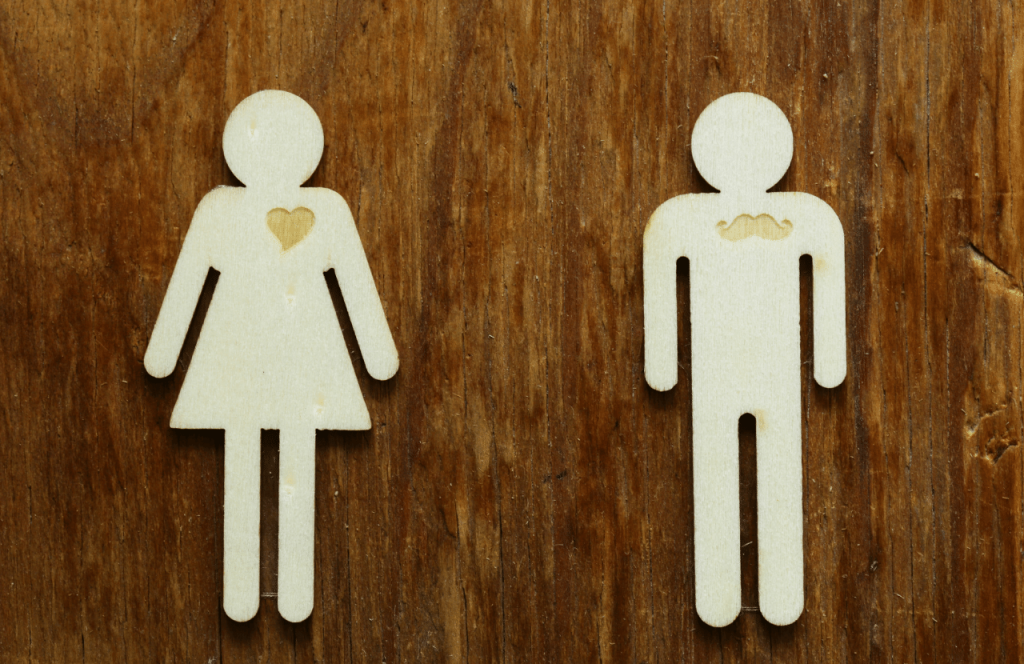Are you interested in learning more about orgasms?
An orgasm is a climax caused by sexual stimulation such as sex or masturbation.
And when you have an orgasm, there are many benefits to your body.
A good understanding of orgasm can help you pursue deeper pleasure and have more attractive sex and masturbation.
- I want to know what an orgasm is.
- What are the benefits of orgasms to the body?
- What are the differences between male and female orgasms?
- I’m having a hard time having an orgasm…
If you have any of these problems or questions, please stay with us until the end.
Table of Contents
What is an orgasm?

Orgasm is a phenomenon in which the muscles gradually contract due to sexual stimulation, and after a great deal of pleasure, suddenly release and the muscles go into a state of relaxation.
In a clinical context, orgasm is usually defined strictly by the muscular contractions involved during sexual activity, along with the characteristic patterns of change in heart rate, blood pressure, and often respiration rate and depth.[10] This is categorized as the sudden discharge of accumulated sexual tension during the sexual response cycle, resulting in rhythmic muscular contractions in the pelvic region.
Orgasm is usually triggered by stimulation of the genitals (penis for men, clitoris for women), but it can also be triggered without stimulation if you are aroused by sexual dreams while you are asleep.
Orgasm can also be triggered by stimulation of the nipples or other sexually sensitive areas, but this is rare.
It is said that 80% of men and 40% of women will experience an orgasm in their dreams during their lifetime.
Not all people are able to experience orgasms.
Some people have anorgasmia, which is the inability to orgasm no matter how much sexual stimulation they receive (orgasm disorder).
This is more common in women, and is also a cause of deep-seated problems.
Some people are so worried about not being able to have an orgasm that they become reluctant to have sex.
However, you don’t have to worry too much about it, because it may be that you just can’t have an orgasm because you haven’t developed your sexual zones (to feel pleasure).
How your body reacts during orgasm
Let’s take a look at how your body reacts when you are having an orgasm.
We mentioned earlier that orgasms are caused by muscle contraction and release.
When sexual stimulation of the penis or vagina is continued, the muscles in the pelvic area contract rhythmically and repeatedly in short intervals, and after feeling a great deal of pleasure, the blood congestion and muscle tension are released at once.
The released muscles relax and the limbs become sluggish and weak. Your heart rate increases, and your breathing becomes shallow and rapid.
With the pleasurable sensation of orgasm, an affectionate hormone called oxytocin is released, making the person feel euphoric.
Next, let’s understand the differences between male and female orgasms.
Men’s orgasm

When a man has an orgasm, it is often accompanied by ejaculation, which is called wet orgasm.
In contrast, orgasms that do not involve ejaculation are called dry orgasms.
When a man feels a wet orgasm, he goes through a refractory period (the so-called “wise man time”) immediately afterwards, when he is less likely to respond to sexual stimulation.
When a man feels a wet orgasm, the muscles around the pelvic anal sphincter, prostate gland and penis contract rapidly, causing semen to be released through the penis, but when a man feels a dry orgasm, it is slightly different.
Dry orgasm is mainly caused by prostate stimulation when performed by a healthy adult male.
By stimulating and developing the prostate gland, orgasm can be felt from the prostate.
In contrast to wet orgasm, which has a refractory period, dry orgasm does not have a refractory period, so it is possible to have multiple orgasms in a row.
Inevitably, a boy before he becomes familiar with the orgasm in childhood will also have a dry orgasm. In addition, sexual dysfunction can also lead to dry orgasm.
Wet orgasm
A male orgasm with ejaculation is called a wet orgasm.
Most people have an image of ejaculation when a man has an orgasm.
However, this was one form of male orgasm.
After a man has a wet orgasm, there is a period of time where he rapidly loses his excitement and becomes calm.
This is called the refractory period and is a biological inevitability for men.
It is due to the rapid release of the hormone prolactin after ejaculation.
When humans were still living a life similar to wild animals, there was a possibility of being attacked by other predatory wild animals even during sex.
Therefore, men who had the role of protecting their families and villages were required to make decisions from a calm perspective as soon as possible after sex was over.
This is why the refractory period comes immediately after ejaculation.
Incidentally, the more intense the sex, the more intense the refractory period.
On the other hand, the more intense the refractory period is, the more oxytocin (also known as the love hormone) is secreted along with prolactin, and the more affectionate you feel toward your partner after sex.
Dry orgasm
An orgasm that involves ejaculation is called a wet orgasm, while an orgasm that does not involve ejaculation is called a dry orgasm.
Dry orgasm is caused by stimulation of the prostate gland, also known as the “male G-spot”.
The prostate is an organ found only in men, and it plays a vital role in helping to produce sperm and maintaining sperm quality.
Although the prostatic line itself is not exposed to the outside world, it can be stimulated by inserting a finger or a toy through the anus.
Normally, wet orgasm is not a continuous orgasmic experience.
However, Dry orgasm, which is felt by stimulating the prostate gland, can give you multiple orgasms in a row, just like a woman (Multiple orgasm).
Many men are addicted to this multiple orgasms.
In order to feel the dry orgasm, it is essential to develop the prostate gland.
If it is not developed, touching the prostate line will not feel good at all.
To develop the prostate, you basically insert an anal plug or dildo into the anus and leave it there.
It’s not like you’re inserting a toy in and out of the prostate, but rather you’re holding it against the prostate. The development of the prostate can take quite a long time, sometimes several months for the most experienced.
Female orgasms

Next, let’s talk about female orgasms.
Female orgasms can be divided into two types: External orgasm, which is felt in the clitoris, and Internal orgasm, which is felt through stimulation of the vaginal sex organs.
External orgasm is less difficult than internal orgasm, and there are many women who cannot do internal orgasm but can do external orgasm.
Internal orgasm is also known as vaginal orgasm, and the existence of vaginal orgasm was first revealed in 1905 by Sigmund Freud, a German psychiatrist.
Since then, other doctors and scholars have been unraveling the female orgasm through various discussions and studies.
However, the female orgasm is still a mystery, and an interesting one at that.
External orgasm
An external orgasm is an orgasm that is felt in the clitoris, which is a woman’s most sensitive area.
The clitoris, located near the entrance to the female genitals, is an organ that plays much the same role as the glans of the male penis and is thought to be there solely for the purpose of feeling pleasure.
Sexual stimulation causes the clitoris to engorge and become erect, just like the penis.
When erect, the clitoris becomes hard and swollen, just like the penis.
It is said that the pleasure felt in the clitoris is almost the same as the pleasure felt by a man when he ejaculates.
The clitoris is said to be almost as pleasurable as ejaculation.
After a clitoral orgasm, there is no lingering sensation, but a crisp sensation.
You don’t need any development to have a clitoral orgasm. This is because the clitoris itself is a very sensitive organ and can feel pleasure from even the slightest stimulation.
The clitoris is an organ that is very sensitive to stimulation and can feel pleasure from even the slightest stimulation. It is amazing that some people learn to masturbate as early as childhood.
In many cases, however, the masturbation learned in childhood is not for the purpose of relieving sexual desire, but simply because it feels good.
Internal orgasm
There are two types of internal orgasm: G-spot orgasm, which is caused by stimulation of the G-spot, and Portio orgasm, which is caused by stimulation of the Portio (vulva).
Strictly speaking, there are more sexual zones in the vagina, but these are the two main ones that give you pleasure.
The G-spot is one of the most famous sexual zones, along with the clitoris, so you may have heard of it.
The G-spot is a slightly rough, coin-sized area on the upper side of the vaginal wall, about 3 to 5 cm from the vaginal opening.
The G-spot can be a bit confusing because it refers to that area rather than a point.
The G-spot is made up of a tissue called the urethral spongiosa, and when stimulated, it can make you feel the urge to urinate.
Strictly speaking, the urge to urinate is not caused by urine, but by a love fluid called tide.
The G-spot is not the first thing that can be stimulated to give you pleasure, but it can be developed to give you orgasms.

Continuos orgasm(Multiple orgasm)
Women can also feel what is called a continuos orgasm (multiple orgasm).
For men, there is a refractory period after ejaculation where they become very calm, but for women, they can have multiple orgasms without pause.
The best way to feel multiple orgasms is with internal orgasm.
Portio orgasms, in particular, leave a great lingering sensation of pleasure, and orgasming again in that lingering sensation can lead to a state of ecstasy.
Portio orgasms can linger for tens of minutes, so it is easy to be in a state of ecstasy during that time.
Incidentally, not all women are capable of feeling multiple orgasm.
It is important to understand that orgasms vary greatly from person to person.
Differences in orgasms between men and women

The way men and women feel about orgasms is similar but very different.
They differ in everything from the object of excitement to the way they feel pleasure.
If you don’t understand these differences and live a normal life, it is natural that you will have differences in perceptions and opinions about sex.
By understanding the differences in how we feel about orgasms, we can have a better sex life with our partners.
The next section will explain the specific differences between male and female orgasms.
Differences in sexual arousal
First of all, the objects that excite men and women also change.
While many men get excited by sex scenes featuring their female love interest, women can get excited regardless of the gender of the characters (they can get excited by any combination of male and male…). Maybe that’s why BL: Boys’ Love is so popular).
In addition, men tend to be excited by direct visual or olfactory stimulation, while women are more likely to be excited by the situation, the relationship with the partner, and the affection.
Women are more imaginative and good at fantasy.
It is often said that “women have orgasms in their brains,” and don’t you think you know what that means?
A long time ago, men were originally creatures that hunted outside.
As a result, they were skilled at following moving objects with their eyes and making judgments based on scent.
Women, on the other hand, were responsible for raising and protecting their children in the village. Therefore, they are skilled at listening to others, communicating, and imagining various things.
I believe that these vestiges of the past may have something to do with orgasms.
Does a woman feel 10 times more than a man?
It is said that women feel ten times more intense pleasure during sex than men.
However, this is only true for women who have developed orgasms, and many women don’t know what an orgasm is, as studies have shown that half of healthy adult women who have sex do not know what an orgasm is.
However, if women can feel orgasms, they can experience much more intense pleasure than men.
Another characteristic of a woman’s orgasm is that the pleasure during orgasm lasts longer.
While men’s orgasms last only a few tens of seconds, women’s orgasms can last for tens of minutes.
It may sound like it would affect your health if you keep having orgasms for tens of minutes, but this is not a problem.
However, it might be a little tiring.
Differences in sensory sensitivity between men and women
The perception of sex also differs between men and women.
While men have sex to pursue pleasure (physiological needs), when women have sex, it is often to confirm their love or to be aware of their relationship with their partner.
Of course, this does not apply to all people, but as a living creature, there is a tendency to do so.
The importance of understanding how men and women feel orgasms

As I mentioned above, men and women are different in terms of what excites them, how they feel pleasure, and even their sensitivity.
Understanding these differences between men and women is essential in order to have a happy relationship with your partner and have fulfilling sex.
The following are two reasons why you need to understand how men and women feel orgasms differently.
- Building trust with your partner
- To improve your technique
Let me explain each in detail.
Building trust with your partner
Understanding the differences between male and female orgasms will help you build trust with your partner, because you can show understanding without forcing your partner to do anything.
For example, if you understand that men have a refractory period after ejaculation due to the hormone prolactin, you can avoid saying, “I want to have sex with you again, but you won’t do it! He doesn’t love me! And if men understand that women’s sexual zones need to be developed, they won’t be in a hurry to say, “Why can’t I have an orgasm even with all my techniques? If the man understands that the woman’s sexual zones need to be developed, he won’t be in such a hurry.
This kind of mutual understanding will lead to building trust with your partner.
It is very important to try to understand your partner, not only in sex.
Improving your technique
You can also improve your technique by understanding the differences between male and female orgasms.
Technique is not something that can be managed simply by using the knowledge and skills you have learned.
It is a technique that can only be achieved by knowing what the other person feels, the intensity at which they feel it, and the situation in which they feel it, and then applying it appropriately.
If you don’t know what the other person is thinking or feeling, it is just self-satisfaction.
Techniques and communication are only possible with the other person.
Understanding the other person is the key to success. I’m sure you’ll agree.

Benefits of having an orgasm

Having an orgasm has a number of benefits for the body.
There are three main effects of orgasms on the body.
- It has a positive effect on beauty
- Stress relief
- Helps you get a good night’s sleep
Let’s check out each of them in detail to see how they work!
Beauty
Having orgasms at the right frequency can be beneficial for beauty.
When you reach orgasm, you secrete an affection hormone called oxytocin, which suppresses the active oxygen in the fibroblasts in your skin. (Reactive oxygen species (ROS) attack skin cells and interfere with collagen production.
Also, reactive oxygen species attack melanocytes, which produce melanin, in the epidermis of the skin (the top layer of skin), and can cause blemishes.
Oxytocin inhibits the action of these reactive oxygen species, which is why orgasms can provide beauty benefits.
It feels good and is good for beauty, a benefit that is especially nice for women.
Stress relief
Oxytocin, which I mentioned earlier as being effective for beauty, is actually also effective for stress reduction.
Oxytocin is a hormone that is secreted when you are in contact with someone you trust or when you are in contact with animals.
- It brings a sense of happiness
- Decrease anxiety
- Stress relief
- Prevention of infections
There are many other benefits to living a healthy life.
In today’s stress-prone world, having an orgasm is a very easy and effective means of stress relief.
Good sleep
After having an orgasm, you will feel a good amount of fatigue, which leads to good sleep.
Recently, more and more people in India have been teleworking due to COVID-19, and many of them may be suffering from poor sleeping habits.
Since they no longer have to go to work, their bodies don’t feel the right amount of fatigue, which makes it difficult for them to sleep.
If you feel that you are having trouble sleeping lately, it is best to consciously try to have an orgasm, either through masturbation or sex, in moderation.
Can’t have an orgasm?

Now that you’ve come this far, you may be worried about not being able to have an orgasm with the sex or masturbation you’ve been having.
For those who are worried about not being able to have an orgasm, the first thing we want to tell them is: don’t worry too much.
Even if you don’t have an orgasm, as long as you are enjoying sex, there is no problem at all.
Oxytocin, which is the love hormone I mentioned earlier, is released even when you are slowly touching your partner, and it has a relaxing effect.
If you feel pressured or worry too much about not having an orgasm, you may end up hating sex itself. This is more of a problem.
Sex is an important form of communication between you and your partner, so it doesn’t matter whether you have an orgasm or not as long as you have sex that you both feel comfortable with.
Summary
There are so much you don’t know about orgasms.
There are many benefits to orgasms, and the way men and women feel and the types of orgasms are different.
Understanding the differences in orgasms between men and women will help you have more comfortable sex with your partner.




